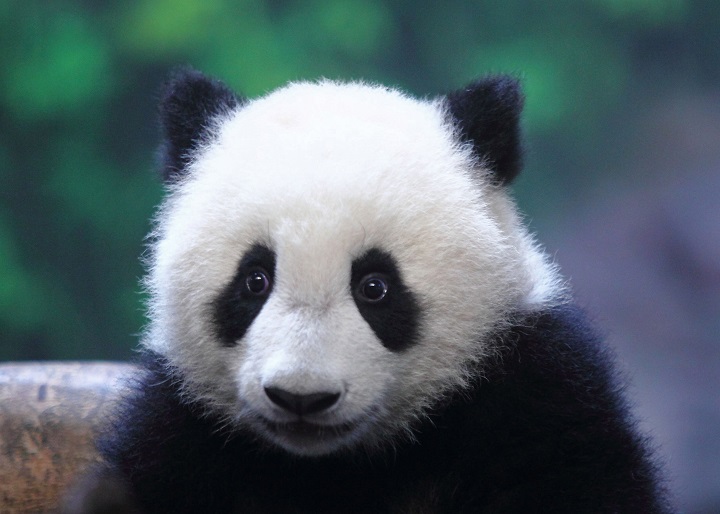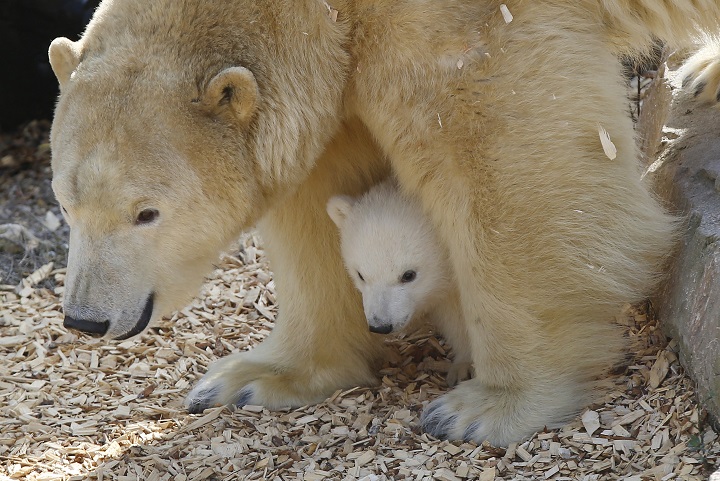The Toronto Zoo excitedly announced Wednesday that its female giant panda Er Shun, appears to be pregnant with twins.

It’s an exciting development, and a successful result for the artificial insemination Er Shun underwent last May.
Pandas are notoriously difficult to breed in captivity. The females experience a very short fertility window — between 48-72 hours each year — and frustrated zoo officials have gone so far as to show pandas mating videos for “inspiration,” and to dose males with Viagra.
READ MORE: Toronto Zoo panda Er Shun pregnant with twins
Er Shun has a long way to go, and pandas remain an endangered species, partially due to the difficulty in breeding. But they’re not alone as slow reproducers in the animal kingdom.
Polar Bear
Zoos have made great efforts to help polar bears reproduce in captivity, but with limited success. One statistic says just five per cent of in-captivity matings actually produce a cub.
The baby polar bear Knut became an international star after his birth at the Berlin Zoological Garden in 2011, but he died at age four. The Toronto Zoo had some luck as well; Humphrey was born in 2013, although he moved to Winnipeg’s Assiniboine Park Zoo in 2015.
Marine turtle
Female marine turtles can lay hundreds of eggs in a single mating season, but very few survive; the WWF estimates that one of every 1,000 eggs will reach adulthood.
Turtles lay their eggs on beaches, and the hatchlings must then scramble across the sands, where they make easy prey for birds, foxes and crabs.
Bornean Orangutan
The great ape is the slowest-breeding mammal on earth.
Females reach sexual maturity around between age 10 and 15, then give birth once every six to eight years after that.
The slow reproduction rate puts the species in constant peril of extinction.
Cheetah
The world’s fastest land mammal is also among its slowest to reproduce and is now endangered as a result. Studies find that males lack much viable sperm and the species is highly inbred. While females birth litters typically of 3-5 cubs, very few survive to adulthood.
Gorilla
Gorillas are slow to reach sexual maturity and begin mating, and things don’t speed up much once they’ve started. A female gorilla will give birth once every four to six years, and birth perhaps three or four babies in her lifetime.
Captive breeding is exceptionally difficult, but there is the occasional success: just last week, the Brookfield Zoo in Illinois welcomed little Zachary, now the fourth generation of endangered gorillas born at the zoo.
African Elephant
Female elephants endure the longest gestation period of any mammal, a whopping 22 months. The calves are then dependent on their mothers for another two years, so the females give birth once every four to five years.
- Enter at your own risk: New home security camera aims paintballs at intruders
- Boston Dynamics unveils ‘creepy’ new fully electric humanoid robot
- Ontario First Nation calls for chemical plant to be shut down amid ‘dangerously high’ benzene levels
- Nova Scotia scraps spring bear hunt idea, public ‘very divided’ on issue










Comments